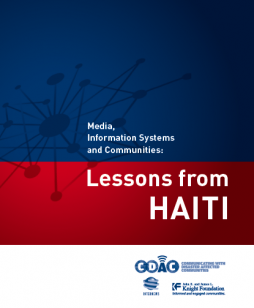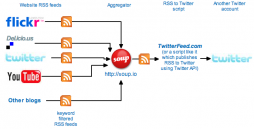emergency
Posted by MelissaUlbricht on Jan 11, 2011
A new report from the Knight Foundation analyzes how new technologies were used to aid in the recovery of the earthquake in Haiti. The report -- Media, Information Systems and Communities: Lessons from Haiti -- suggests that the events mark "the beginning of a new culture in disaster relief" in which new and hybrid technologies, including mobile phones, are used to support rescue and relief efforts.
The report mentions a numnber of uses of mobile technology, including:
- Interactive maps and SMS helped search-and-rescue teams find people in need of supplies
- SMS messages broadcast critical information to Haitians
- Hybrid approaches in which mobile technology was used in conjunction with radio
The authors have three main observations:
| Lessons from Haiti data sheet 2962 Views |
| Global Regions: |
|
| Countries: |
Haiti
|
Posted by Esther Nasikye on Sep 29, 2008
A new report published by U.S. trade group, 3G America's, notes that the use of SMS as an emergency alert service poses serious limitations.
The report, Characterizing the Limitations of Third-Party EAS Over Cellular Text Messaging Services (PDF), notes that while use of text messaging or SMS has become ubiquitous and commonplace for recreational and business purposes, the research indicates that there are serious limitations of third party Emergency Alert Systems (EAS).
Posted by KatrinVerclas on Jan 16, 2008
In a series of posts about Twitter for organizations, guest blogger Nate Ritter gives an overview of the benefits and pitfalls using Twitter. And because he is a geek, he's got an aggregator at the ready... (Modified and posted with permission from Nate's blog.)
My experiences in the San Diego fires in Southern California in late 2007 gave me an interesting outlook on how Twitter, as a tool, could be applied in different circumstances. For those of you not in the know: Twitter is a "free social networking and micro-blogging service that allows users to send "updates" (or "tweets"; text-based posts, up to 140 characters long) to the Twitter website, via short message service, instant messaging, or a third-party application such as Twitterrific" according to the Wikipedia. Just a few months after (and some even during) the 2007 firestorm some organizations are scratching the surface of what’s possible with this service.
Twitter is a tool. It’s a good one in some cases and and for some organizations, and useless for others. Don’t make Twitter the hammer and start looking at everything like a nail. Twitter does some things very well, but it doesn’t fit every organization’s goals. Here are some considerations that will help determine if Twitter could be useful for your organization. If one of these criteria benefits your community without too many hurdles for adoption, then Twitter might be the right tool for you.


